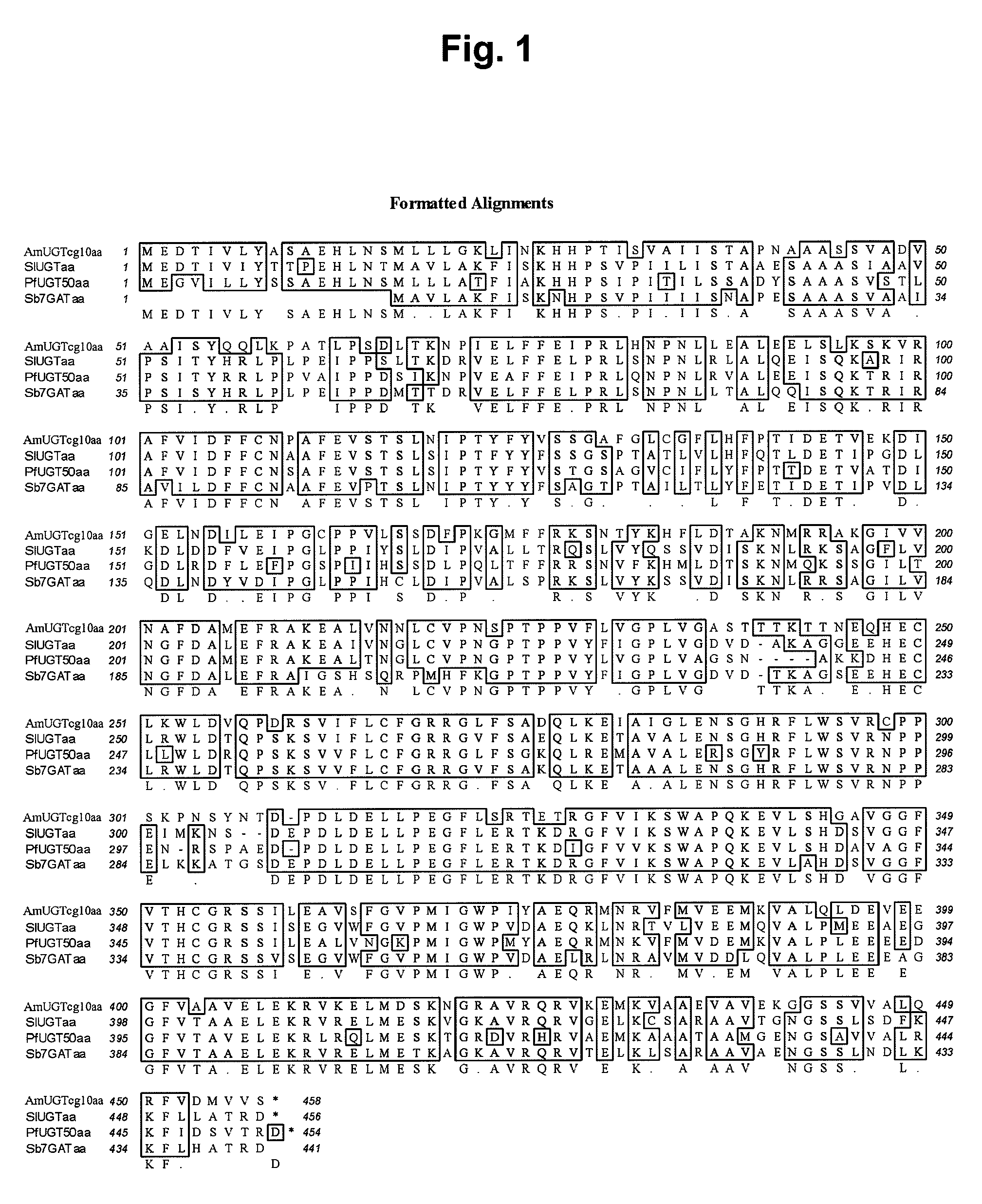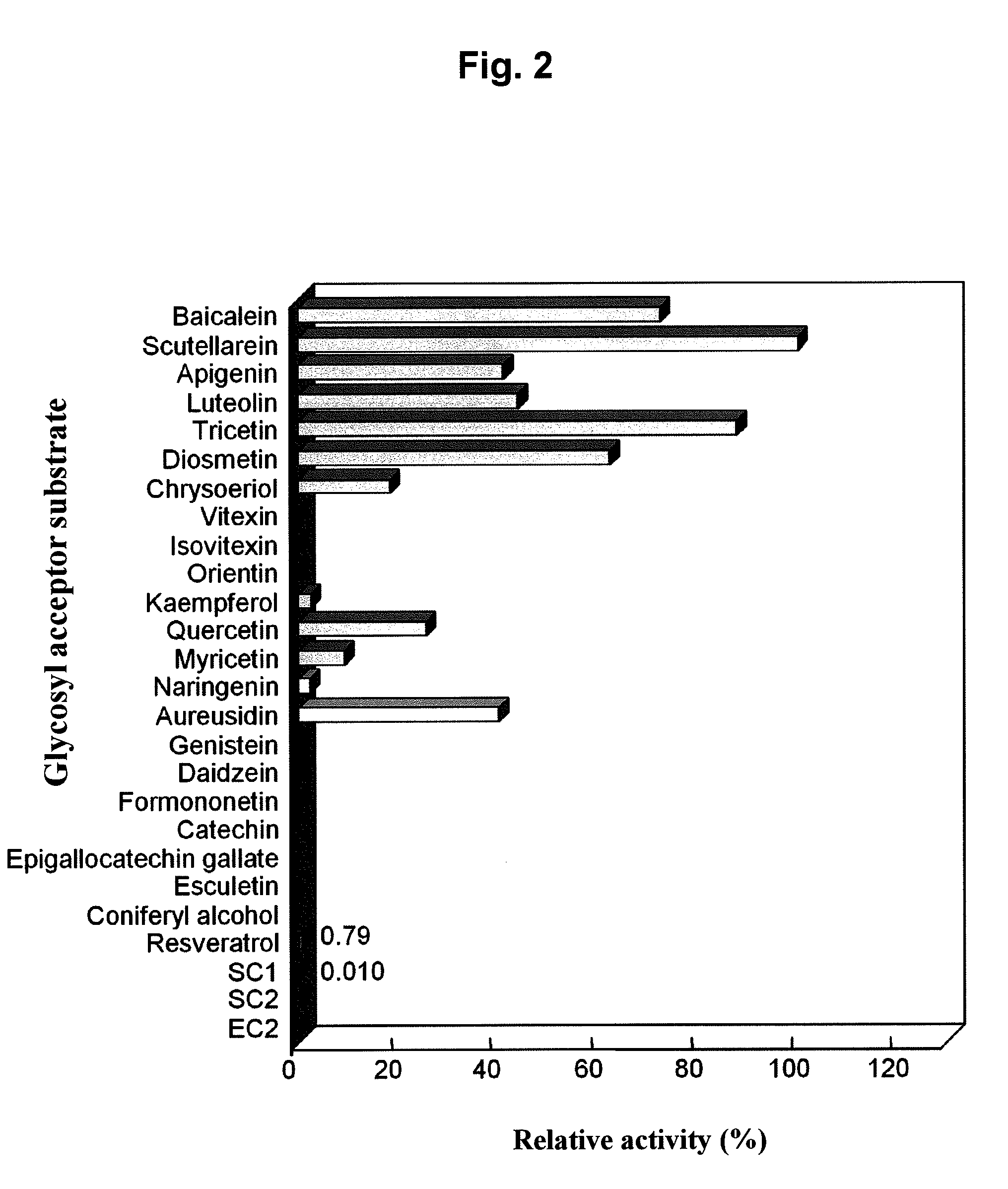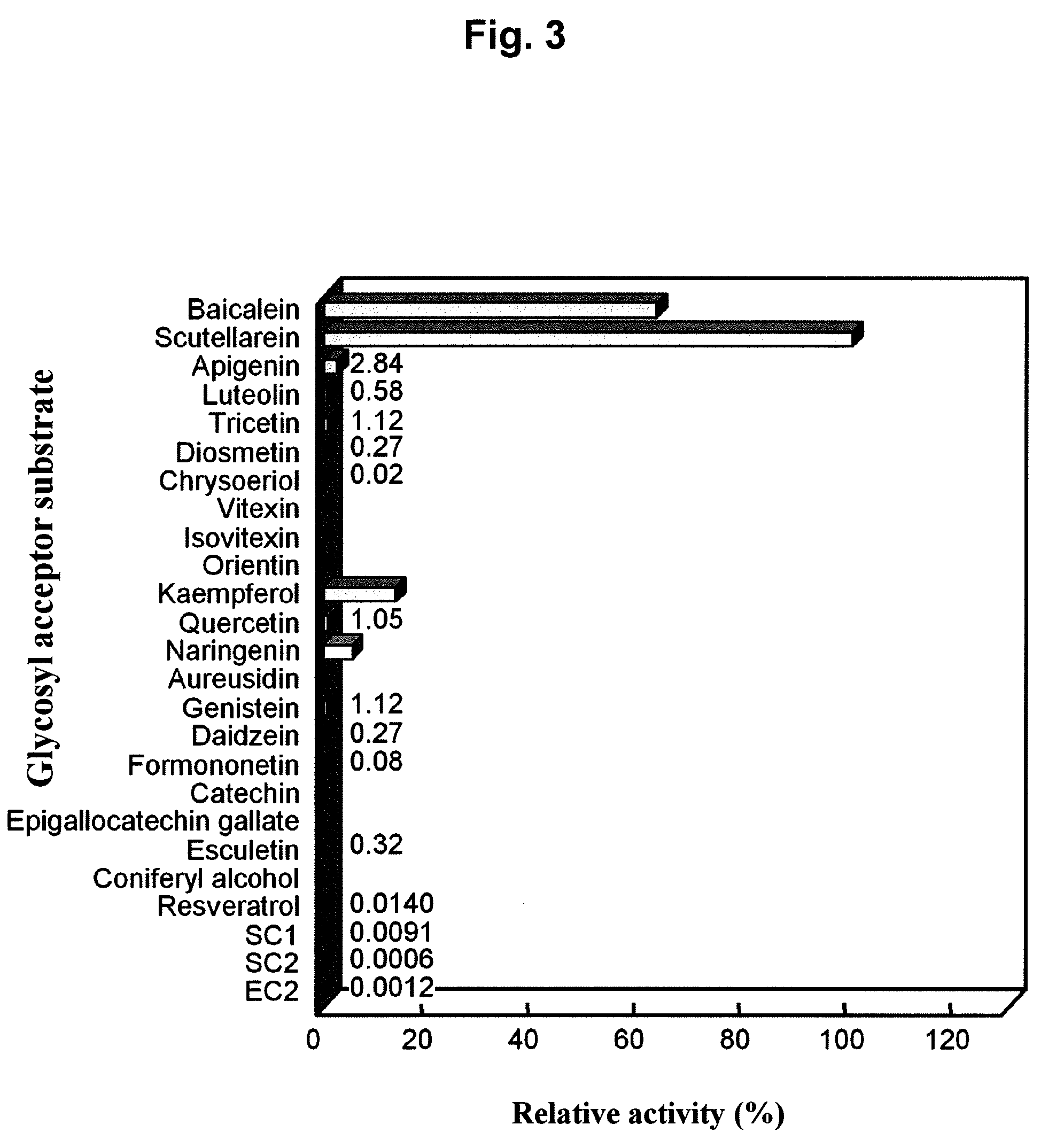Polynucleotide encoding UDP-glucuronyl transferase
a polynucleotide and glucuronyl transferase technology, applied in the field of udpglucuronyltransferase, can solve the problems of insufficient knowledge on the mechanism of plant secondary metabolites, and it is actually impossible to chemically synthesize a binding site-specific reaction product, and achieve the effect of broad substrate specificity
- Summary
- Abstract
- Description
- Claims
- Application Information
AI Technical Summary
Benefits of technology
Problems solved by technology
Method used
Image
Examples
example 1
1. Outline of Example 1
[0112]In this EXAMPLE, Sb7GAT homologue gene (S1UGT) was cloned from Scutellaria laeteviolacea v. yakusimensis by PCR and using this gene as a probe, it was attempted to isolate 7-glucuronosyltransferase of the flavonoid from the cDNA library of Perilla frutescens a red-leaf variety, which accumulates the 7-glucuronide of flavonoid.
[0113]As a result of screening, PfUGT50 having an activity to transfer the glucuronic acid to the 7-hydroxy group of a flavone was identified in glycosyltransferase PfUGT derived from Perilla frutescens a red-leaf variety. This PfUGT50 had the glucuronosyl transfer activity not only to flavones such as baicalein, scutellarein, apigenin, luteolin, etc. but also to quercetin which is a flavonol. Accordingly, the use of PfUGT50 enables to glucuronidate the 7-position of various flavonoids including flavones in vivo.
[0114]Also, S1UGT derived from Scutellaria laeteviolacea v. yakusimensis, which was isolated as a screening probe, showed ...
example 2
1. Outline of Example 2
[0156]In this EXAMPLE, SiUGT23 highly homologous to S1UGT from Scutellaria laeteviolacea v. yakusimensis and AmUGTcg12 from Antirrhinum majus was identified from Lamiales Pedaliaceae Sesamum indicum and it was confirmed that its Escherichia coli expression protein had the glucuronosyl transfer activity to scutellarein and luteolin.
2. Identification of SiUGT23 Gene
[0157]Paying attention to the sequence conservation of 7-glucuronosyltransferase genes (UGT genes) of flavonoids from Scutellaria laeteviolacea v. yakusimensis and Antirrhinum majus, genes having a high homology to these genes were searched, and sesame UGT gene SiUGT23 showing a high homology to these UGT genes was found also in Lamiales Pedaliaceae Sesamum indicum. Since SiUGT23 isolated from the sesame cDNA library had no full-length sequence, the full-length sequence of SiUGT23 (SEQ ID NOs: 22 and 23) was determined by the RACE method described in EXAMPLE 1, 2 (3), using the primers of SEQ ID NOs: ...
example 3
[0163]Using recombinant proteins of PfUGT50 derived from Perilla frutescens, S1UGT derived from Scutellaria laeteviolacea v. yakusimensis and AmUGTcg10 derived from Antirrhinum majus as well as recombinant protein of SiUGT23 derived from Sesamum indicum, the glucuronosyl transfer activities to stilbenes and lignans, which are plant polyphenols, were examined. The enzyme reaction was performed under the same conditions as described above, using resveratrol as a substrate for stilbenes and as substrates for lignans, (+)-pinoresinol, (+)-piperitol, (+)-sesaminol, (+)-secoisolariciresinol, (+)-sesamin catechol 1 (SC1), (+)-sesamin catechol 2 (SC2) and (+)-episesamin catechol 2 (EC2) (Nakai M, et al. (2003) J. Agric Food Chem. 51, 1666-1670).
[0164]As a result of the HPLC analysis, the products were obtained in all of the reaction solutions of PfUGT50 from Perilla frutescens a red-leaf variety, S1UGT from Scutellaria laeteviolacea v. yakusimensis, AmUGTcg10 from Antirrhinum majus and SiUG...
PUM
| Property | Measurement | Unit |
|---|---|---|
| temperature | aaaaa | aaaaa |
| temperature | aaaaa | aaaaa |
| pH | aaaaa | aaaaa |
Abstract
Description
Claims
Application Information
 Login to View More
Login to View More - R&D
- Intellectual Property
- Life Sciences
- Materials
- Tech Scout
- Unparalleled Data Quality
- Higher Quality Content
- 60% Fewer Hallucinations
Browse by: Latest US Patents, China's latest patents, Technical Efficacy Thesaurus, Application Domain, Technology Topic, Popular Technical Reports.
© 2025 PatSnap. All rights reserved.Legal|Privacy policy|Modern Slavery Act Transparency Statement|Sitemap|About US| Contact US: help@patsnap.com



